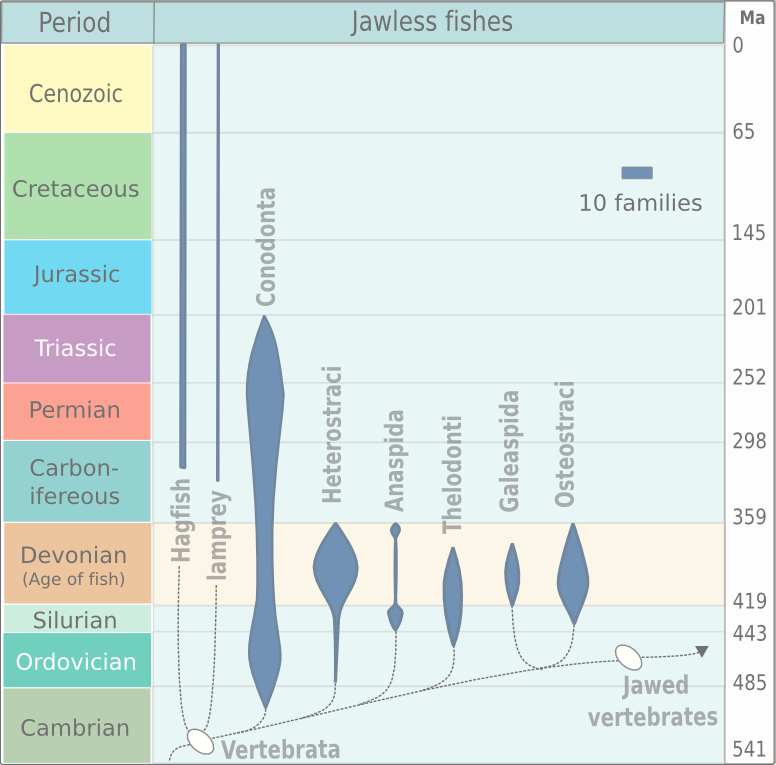|
Holonephros
The holonephros is the kidney of the larva A larva (; : larvae ) is a distinct juvenile form many animals undergo before metamorphosis into their next life stage. Animals with indirect development such as insects, some arachnids, amphibians, or cnidarians typically have a larval phase ...e of cyclostomes and the Gymnophiona. The entire mass of nephrogenic tissue gives rise to this kidney, which is usually of simple form with a single tubule in each segment. External links Comparative Vertebrate Anatomy, BIOLOGY 308, Urogenital System, Richard Fox, Lander University Urinary system {{Genitourinary-stub ... [...More Info...] [...Related Items...] OR: [Wikipedia] [Google] [Baidu] |
Kidney
In humans, the kidneys are two reddish-brown bean-shaped blood-filtering organ (anatomy), organs that are a multilobar, multipapillary form of mammalian kidneys, usually without signs of external lobulation. They are located on the left and right in the retroperitoneal space, and in adult humans are about in length. They receive blood from the paired renal artery, renal arteries; blood exits into the paired renal veins. Each kidney is attached to a ureter, a tube that carries excreted urine to the urinary bladder, bladder. The kidney participates in the control of the volume of various body fluids, fluid osmolality, Acid-base homeostasis, acid-base balance, various electrolyte concentrations, and removal of toxins. Filtration occurs in the glomerulus (kidney), glomerulus: one-fifth of the blood volume that enters the kidneys is filtered. Examples of substances reabsorbed are solute-free water, sodium, bicarbonate, glucose, and amino acids. Examples of substances secreted are hy ... [...More Info...] [...Related Items...] OR: [Wikipedia] [Google] [Baidu] |
Larva
A larva (; : larvae ) is a distinct juvenile form many animals undergo before metamorphosis into their next life stage. Animals with indirect development such as insects, some arachnids, amphibians, or cnidarians typically have a larval phase of their life cycle. A larva's appearance is generally very different from the adult form (''e.g.'' caterpillars and butterflies) including different unique structures and organs that do not occur in the adult form. Their diet may also be considerably different. In the case of smaller primitive arachnids, the larval stage differs by having three instead of four pairs of legs. Larvae are frequently adapted to different environments than adults. For example, some larvae such as tadpoles live almost exclusively in aquatic environments but can live outside water as adult frogs. By living in a distinct environment, larvae may be given shelter from predators and reduce competition for resources with the adult population. Animals in the lar ... [...More Info...] [...Related Items...] OR: [Wikipedia] [Google] [Baidu] |
Agnatha
Agnatha (; ) or jawless fish is a paraphyletic infraphylum of animals in the subphylum Vertebrata of the phylum Chordata, characterized by the lack of jaws. The group consists of both extant taxon, living (Cyclostomi, cyclostomes such as hagfishes and lampreys) and Extinction, extinct clades (e.g. conodonts and Cephalaspidomorphi, cephalaspidomorphs, among others). They are sister taxon, sister to vertebrates with jaws known as gnathostomes, who evolution, evolved from jawless ancestors during the early Silurian by developing folding joint, articulations in the first pairs of gill arches. Sequencing, Molecular data, both from rRNA and from mtDNA as well as Embryology, embryological data, strongly supports the hypothesis that both groups of living agnathans, hagfishes and lampreys, are more closely related to each other than to Gnathostomata, jawed fish, forming the Class (biology), superclass Cyclostomi. The oldest fossil agnathans appeared in the Cambrian. Living jawless fish c ... [...More Info...] [...Related Items...] OR: [Wikipedia] [Google] [Baidu] |
Gymnophiona
Caecilians (; ) are a group of limbless, vermiform (worm-shaped) or serpentine (snake-shaped) amphibians with small or sometimes nonexistent eyes. They mostly live hidden in soil or in streambeds, and this cryptic lifestyle renders caecilians among the least familiar amphibians. Modern caecilians live in the tropics of South and Central America, Africa, and southern Asia. Caecilians feed on small subterranean creatures, such as earthworms. The body is cylindrical and often darkly coloured, and the skull is bullet-shaped and strongly built. Caecilian heads have several unique adaptations, including fused cranial and jaw bones, a two-part system of jaw muscles, and a chemosensory tentacle in front of the eye. The skin is slimy and bears ringlike markings or grooves and may contain scales. Modern caecilians are a clade, the order Gymnophiona (or Apoda ), one of the three living amphibian groups alongside Anura (frogs) and Urodela ( salamanders). Gymnophiona is a crown grou ... [...More Info...] [...Related Items...] OR: [Wikipedia] [Google] [Baidu] |
Nephron
The nephron is the minute or microscopic structural and functional unit of the kidney. It is composed of a renal corpuscle and a renal tubule. The renal corpuscle consists of a tuft of capillaries called a glomerulus and a cup-shaped structure called Bowman's capsule. The renal tubule extends from the capsule. The capsule and tubule are connected and are composed of epithelial cells with a lumen. A healthy adult has 1 to 1.5 million nephrons in each kidney. Blood is filtered as it passes through three layers: the endothelial cells of the capillary wall, its basement membrane, and between the podocyte foot processes of the lining of the capsule. The tubule has adjacent peritubular capillaries that run between the descending and ascending portions of the tubule. As the fluid from the capsule flows down into the tubule, it is processed by the epithelial cells lining the tubule: water is reabsorbed and substances are exchanged (some are added, others are removed); first wit ... [...More Info...] [...Related Items...] OR: [Wikipedia] [Google] [Baidu] |




